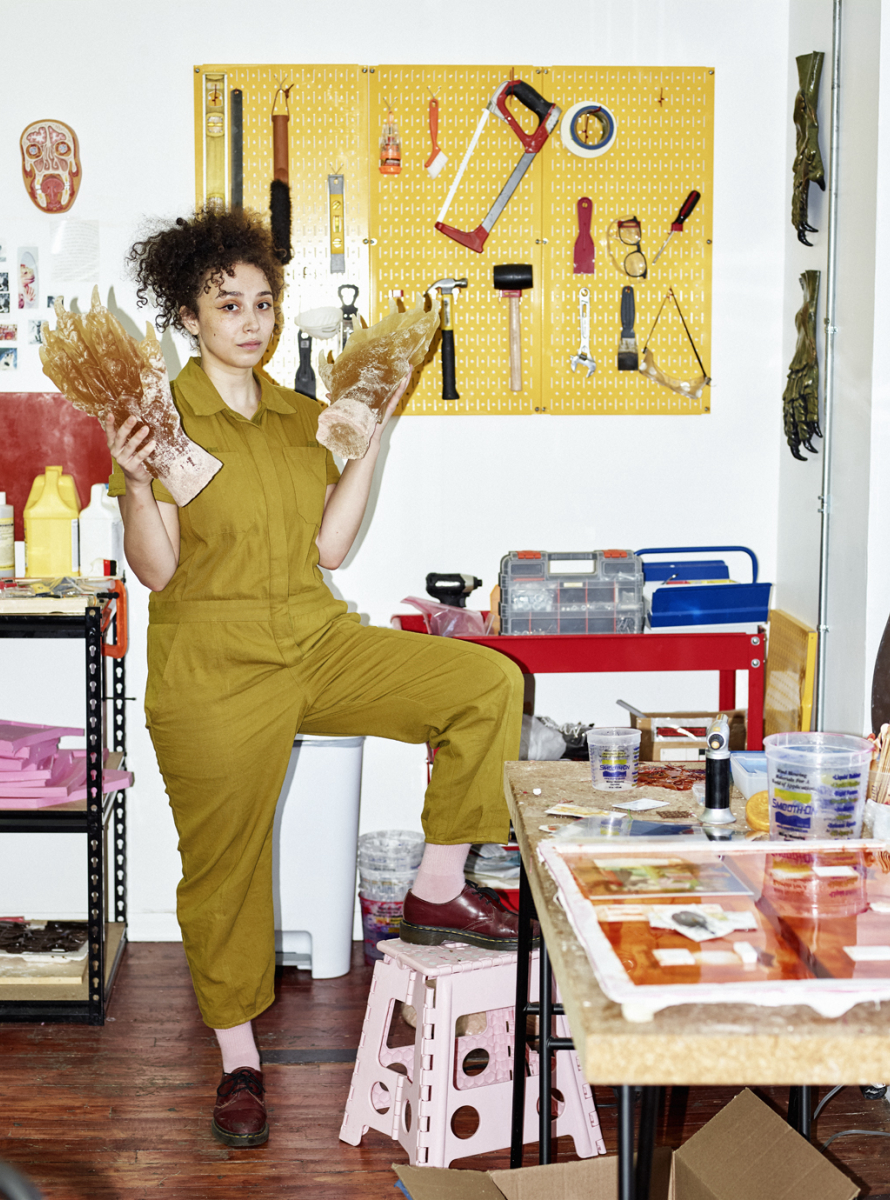Self-taught first as a textile artist, Los Angeles native Sula Bermúdez-Silverman has, for the better part of the past two years, found herself working primarily in sugar, that sweet disaccharide through which, it has been said, one could read the entire history of the new world. Bermúdez-Silverman’s conceptually driven practice begins in extensive research, the diverse threads of which are then woven together, taking on distinct material identities in the process. Fascinated by the Age of Exploration, she melts down sugar, often on a hot plate in her downtown studio, before casting it into the panels of dollhouses, their miniature casements or the appendages of canonical movie monsters as a way to gesture at the global networks of trade and domination that were set up to facilitate the extracted commodity’s safe passage between the colonies and Western imperial centers.
In her exhibitions, sugar is often presented alongside glass and salt, which function like physical homonyms disorienting perception and fixity. For her graduate thesis at the Yale School of Art, Bermúdez-Silverman made a table with two parts that joined at the center, each inspired by a religion of her grandmothers. She has both Afro-Caribbean and Jewish heritage. In addition to a litany of objects that represent or in some way stand in for the religious and cultural traditions of her ancestors, the dense installation also features a video of the artist having her hair done by Rachel Dolezal, a white woman who worked at the NAACP and notoriously rose to national prominence after it came to light that she was masquerading as Black.

Bermúdez-Silverman tells me that her interest in Dolezal as a cultural figure and as a very real individual began when she found herself hesitant or unable to pass firm judgment on what she thought of her. The video, which shows only 13 minutes of the hours long encounter between the two and is presented without sound, pulses with tension and indeterminacy. What is perhaps most impressive is that while in description the artist’s work might sound entirely dependent on the references that it weaves through, in reality, without having to know who Dolezal is or that Bermúdez-Silverman is multiracial, the video somehow formally communicates the unease of identity and identification. Best known for her ghostly, glazed dollhouses, which have been the centerpiece of exhibitions at the California African American Art Museum and Murmurs in LA and Josh Lilley in London, Bermúdez-Silverman’s work is dense but remains conceptually nimble and supple as it lurches across history to demonstrate the artificiality of colonial categories.










 in your life?
in your life?

